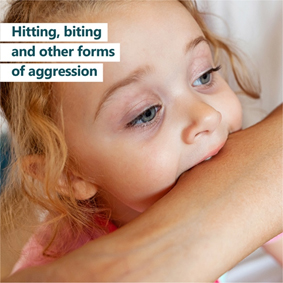How to Deal with Special Needs Tantrums
Working with students who have tantrums related to special needs can be challenging, but there are also many opportunities for it to be rewarding. This lesson offers ideas and strategies for dealing with tantrums in students with special needs.
The Challenge of the Tantrum
Let us consider a special education teacher who works in an inclusive setting, or one where typically developing kids work alongside those with individualized education programs (IEPs). The teacher notices that his students with special needs are academically more competent than students he has taught in the past, but he is struggling with many of their behavioral challenges.
One thing that he finds especially difficult is the fact that he has many students who regularly have tantrums or fits of dysregulation. Tantrums can involve a variety of behaviors, including the following:





Most fifth graders rarely, if ever, have tantrums, but as the teacher knows, tantrums happen more frequently in students with special needs. These students grow more easily overwhelmed, have limited self-regulation, and struggle more with finding language to express their strongest feelings.
Safety First
The teacher decides that when addressing a tantrum in his students, the first thing he needs to think about is safety. This means focusing on the physical safety of the student who is having the tantrum as well as the other students in the class. Emotional safety is also paramount, but in the face of a tantrum, it must play second fiddle to physical safety.
To ensure the safety of students with special needs who are having tantrums, the teacher makes sure that during their tantrums, they are in an isolated area of the room with no furniture in their way. When possible, he holds his students in a firm physical restraint so that they cannot hurt themselves or others. He removes any objects they might knock or throw.
If the teacher is truly concerned about the physical safety of other students in the class during a tantrum, he evacuates them to the playground or school library. His school policy dictates that the first call the office, wait for another teacher to come, and then stay with the student having the tantrum while the other teacher takes the class out. However, he knows that different schools have different protocols; each teacher should talk with his or her administrator about this kind of evacuation. Usually, such extreme measures are not necessary, however.
The Role of Prevention

The teacher begins keeping a chart that helps him understand what kinds of activities or events precede his students' tantrums. For instance, he learns that one student with severe learning disabilities tends to have tantrums during a reading period when asked to do a difficult task. He pays more attention to previewing tasks and providing important accommodations to help the student avoid stress and escalation.
He learns that a student with autism has tantrums during recess, and he determines that recess involves too much sensory stimulus for this child at this point. With the school counselor, he finds calmer alternatives for the student during this time.
The teacher knows that he will not be likely to get rid of tantrums among his students altogether, but a little prevention can go a long way.
Inserting Language, Inserting Understanding

Another thing The teacher does is teach his students explicit, or clear and direct language that they can use to describe and discuss their strongest feelings. Even when they are amid tantrums, he teaches them language, by saying, for instance, 'You are feeling so angry right now!'
The teacher knows that modeling and explicitly teaching language around emotions and challenges will help his students feel more in control of themselves and their environments. This will enable more self-advocacy and will probably help de-escalate some tantrums in the future.
The teacher also involves family and ancillary service providers to make sure that everyone on the child's team is using the same language to deal with tantrums and talk about emotions.
In summary, a tantrum can be one of the most difficult behaviors to deal with in a school setting, but it is not uncommon for students with special needs to struggle with tantrums.
When your students have tantrums, it is crucial to be mindful of their physical safety and that of those around them. Take steps to find out what antecedents trigger tantrums in your students, and work on prevention whenever possible.
Finally, little by little, teach your students language that will help them manage and express their strongest emotions.
